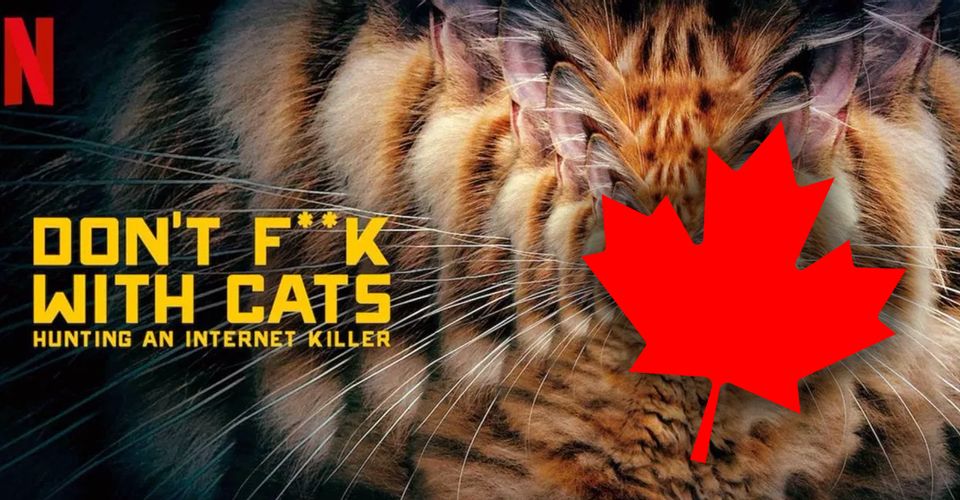What Netflix’s Don’t F**k With Cats Documentary Gets Wrong About Canada

WARNING: This article contains upsetting material relating to the abuse and murder committed by Luka Magnotta. Please proceed with caution.
The Netflix documentary series Don’t F**k With Cats is another controversial true-crime docuseries; not only does Don’t F**K With Cats: Hunting An Internet Killer depict upsetting images, but the series is also being criticized for omitting details from the Luka Magnotta case. In 2012, Luka Magnotta murdered and dismembered Chinese international student Jun Lin. The documentary series is also inaccurate: it presents details about Canada that are either misleading, or in some cases, completely false.
The 3-episode docuseries tells the story from the perspective of “internet sleuths” who banded together on Facebook to track down the identity of an anonymous man who posted a video of himself graphically killing kittens. The two amateur detectives the series focuses on are Deanna Thompson, aka Baudi Moovan, and John Green. Largely using talking heads segments, Don’t F**k With Cats lets Thompson and Green tell their side of the story. This begins with them discovering the initial kitten-killing video, their attempts to identify the culprit, and their eventual contact with Canadian police forces.
Once Thompson and Green learned the identity of the man behind the cat-killing videos was Canadian Luka Magnotta, they contacted the Toronto police. During this segment of Don’t F**k With Cats, the filmmakers let Thompson and Green tell the story, despite these two individuals being amateur detectives from the United States with no experience in Canada. As a result, some of the things they say are either misleading or wrong.
Luka Magnotta Living In Etobicoke

In this first episode Don’t F**k With Cats, Thompson and Green describe how they were able to track down where Luka Magnotta had been living when he posted the first kitten video by running Magnotta’s images (pictures of himself that he had posted on numerous fan-sites he made for himself) through an online service that provides metadata. Once they had gps coordinates from a photo situating Magnotta in Toronto, Green used Google maps street view to track down Magnotta’s location. He was able to identify an apartment building in one of Magnotta’s photos by the Petro-Canada in the background.
Green described the apartment building as being located it Etobicoke, which he mispronounces and describes as a “suburb outside of Toronto.” In reality Etobicoke (Eh-toh-bah-coh) is much larger than Green lets on, and is home to a population of roughly 500 000 inhabitants. Etobicoke is one of six former Metropolitan Toronto boroughs that were amalgamated in 1998 into the Greater Toronto Area.
Karla Leanne Homolka

Deanna Thompson describes finding an article about Luka Magnotta in The Toronto Sun, which she describes as a “tabloid-y, kind of gossipy rag” (The Toronto Sun is a bit more reputable than that, but not by much). The Netflix documentary contains a talking head segment with Joe Warmington, the journalist who wrote the piece back in 2007. He states that Luka Magnotta claimed to be the victim of online harassment due to rumors that he was romantically linked with the serial killer Karla Homolka. Warmington describes Homolka’s history, the crimes she committed with husband Paul Bernardo, and her reputation in Canada.
The documentary leaves out a few key aspects of Homolka’s history. First, the Bernardo and Homolka murders, known colloquially as the “Schoolgirl Killer murders,” also occurred in the GTA, which may be the reason why Magnotta was drawn to them. Secondly, Homolka didn’t just murder three girls (one of which was her own sister), she also brutally raped and tortured them. Finally, Homolka was released from prison in 2005, so the convicted serial killer was in the public’s mind in 2007.
There are a few other minor inconsistencies and omissions in the Netflix true-crime documentary; for example, the Thompson and Green mention their difficulties contacting the Montreal and Toronto police forces, but don’t mention the national police force, the Royal Canadian Mounted Police, nor the primary intelligence gathering force in Canada, the Canadian Security Intelligence Service. Don’t F**k With Cats has a lot of problems, the least of which is factual inaccuracies.
Luka Magnotta was convicted of first-degree murder in 2014 and is currently serving a life sentence in prison.
About The Author


















